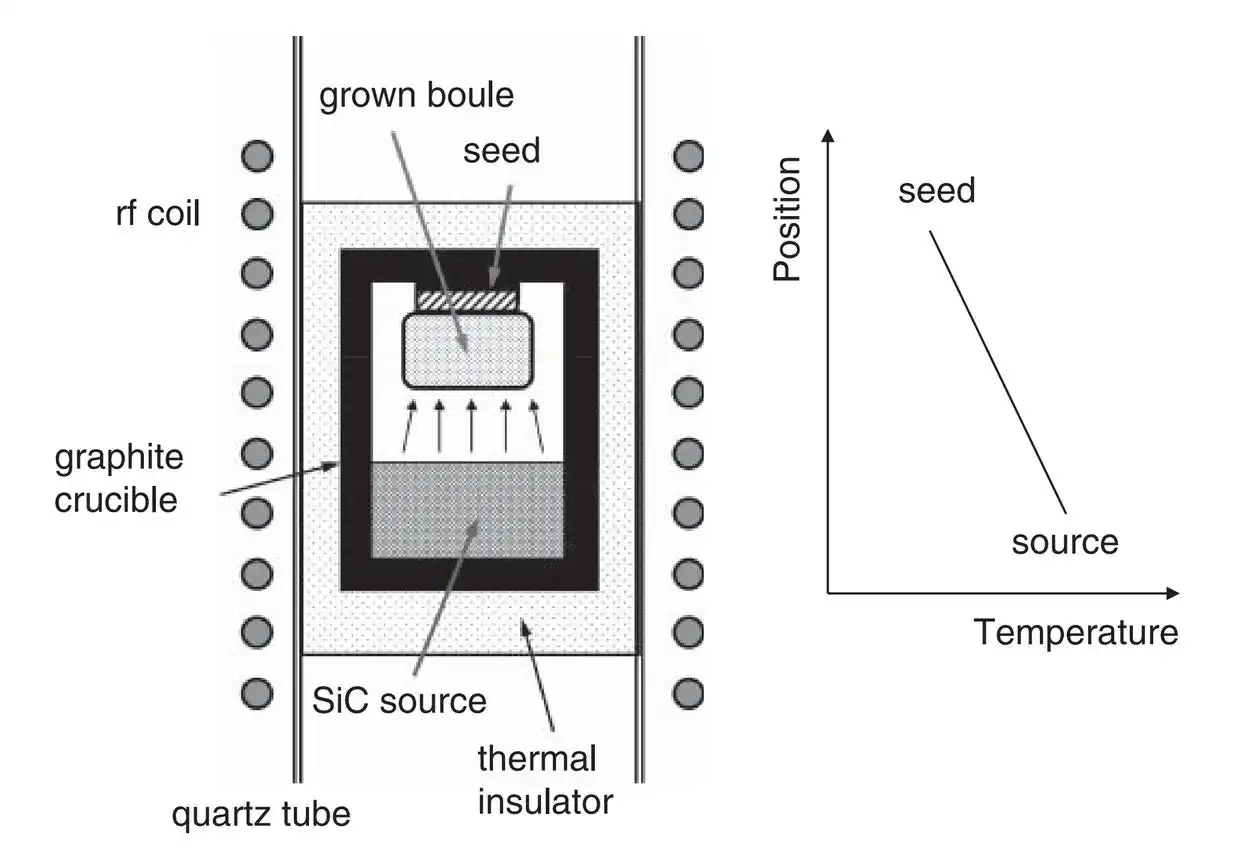The PVT method, whose full name is Physical Vapor Transportation, is a common method for growing silicon carbide (SiC)crystals under high temperature and high pressure. Its basic principle is to heat silicon carbide powder to sublimation at a temperature above 2300℃ and in a low-pressure environment close to vacuum, forming a reaction gas containing gaseous components such as Si, Si2C, and SiC2. Due to the different gas-phase partial pressures of the Si and C components formed by the solid-phase sublimation reaction, the Si/C stoichiometric ratio varies with the thermal field distribution. Therefore, it is necessary to control the distribution and transport of the gas-phase components to ensure they reach the specific crystallization positions in the growth chamber.
To prevent disordered gas-phase crystallization from forming polycrystalline silicon carbide, silicon carbide seed crystals are set at the top of the growth chamber. Under the drive of gas-phase supersaturation, the gas-phase components will deposit on the surface of the seed crystal to form silicon carbide single crystals. The entire reaction process takes place in a closed growth chamber, where all parameters of the reaction system are coupled with each other. Any fluctuation in growth conditions will affect the stability of single crystal growth.
In addition, the different close-packed structures of silicon carbide single crystals in terms of their crystal orientation lead to various atomic connection and bonding methods, thus forming more than 200 crystal forms of silicon carbide isomers. The energy conversion barrier between different crystal forms is extremely low, so crystal form transformation is very likely to occur in the PVT single crystal growth system, resulting in disordered target crystal forms and various crystallization defects. Therefore, it is necessary to use dedicated inspection equipment to detect the crystal form and various defects of the crystal ingot.
The preparation process of silicon carbide has extremely high requirements, mainly manifested in the following aspects:
- There are many environmental impurities in the synthesis process of silicon carbide powder, making it difficult to obtain high-purity powder. The incomplete reaction between silicon powder and carbon powder as the reaction source is prone to cause an imbalance in the Si/C ratio. The crystal form and particle size of silicon carbide powder after synthesis are difficult to control.
- Under conditions of high temperature above 2300℃ and near vacuum, silicon carbide undergoes a “solid-gas-solid” transformation and recrystallization process in a closed graphite chamber. This process has a long growth cycle, is difficult to control, and is prone to defects such as microtubules and inclusions.
- Silicon carbide includes over 200 different crystal forms, but production usually only requires one crystal form. During the growth process, crystal form transformation is prone to occur, resulting in multitype inclusion defects. During the preparation process, it is difficult to stably control a single specific crystal form, and the energy conversion barrier between different crystal forms is extremely low, which increases the difficulty of control. The parameter control and related research during this period require huge R&D costs, which is also one of the reasons for the high cost of compliant silicon carbide
Post time: Jul-03-2025
